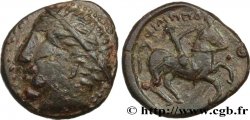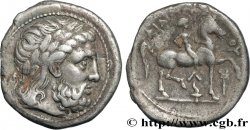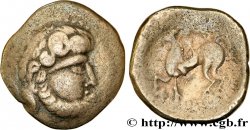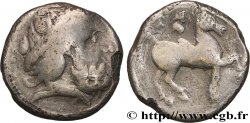bga_228693 - DANUBIAN CELTS - TETRADRACHMS IMITATIONS OF PHILIP II AND HIS SUCCESSORS Tétradrachme au cavalier, imitation de Philippe II
无库存.
所有在网站上销售的产品 (2015)
价格 : 150.00 €
所有在网站上销售的产品 (2015)
价格 : 150.00 €
种类 Tétradrachme au cavalier, imitation de Philippe II
日期: (IIe-Ier siècles avant J.-C.)
材质 silver
直径 25,5 mm
模子方针 7 h.
重量 13,39 g.
稀少度 R2
关于品相的说明
Tétradrachme complet, fortement usé, avec un important coup de burin. Fine patine grise
出版目录中的项代码 :
正面
正面的文字 ANÉPIGRAPHE.
正面的说明书 Tête laurée de Zeus à droite ; grènetis.
背面
背面的说明书 Cavalier au pas à droite, tenant une palme de la main droite ; le cheval lève l'antérieur à droite ; entre les jambes du cheval, une torche (?).
背面铭文 FILIP - POU.
评论
Si le statère d’or de Philippe II de Macédoine a servi de prototype à de nombreuses imitations gauloises, le tétradrachme n’a pas été imité en Gaule, mais reste le principal sujet d’inspiration des monnaies pour les Celtes du Danube (LT. 9697-9767, 9768-9832, 9618-9630, 9870-9886). Les premières imitations furent frappées dans le premier quart du IIIe siècle avant J.-C. La fabrication des copies serviles, puis des imitations, enfin des frappes celtiques continuèrent pendant plus de deux siècles.








 对产品描述纠错
对产品描述纠错 打印
打印 分享我的选择
分享我的选择 提问
提问 Consign / sell
Consign / sell
 产品介绍
产品介绍



